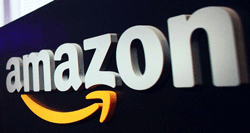Another weak NFL season might spell the downfall of broadcast television, and what happens if Amazon moves in on major sports rights for Prime Video?
By Jeffrey Cole
 For years, analysts have been predicting the demise of the broadcast networks. Even before Rupert Murdoch and Barry Diller created the Fox Network in the 1980s, many observers argued there was not a strong enough economy for three networks–let alone a new fourth.
For years, analysts have been predicting the demise of the broadcast networks. Even before Rupert Murdoch and Barry Diller created the Fox Network in the 1980s, many observers argued there was not a strong enough economy for three networks–let alone a new fourth.
The networks have turned out to be more durable than most people thought.
HBO became a super creator of original content (The Sopranos, Sex & the City), and some saw it as an existential threat to broadcast. Later, newer players like Netflix, Amazon, and Hulu followed with their own original, popular, Emmy-winning programs.
On top of these new competitors, overall viewing patterns changed as the coveted 18-34 audience drifted towards viewing shorter, YouTube-like videos on laptops, smart phones and tablets. These things did bleed some audience away, but the expected crippling blow to the networks did not come.
I have long argued that what will eventually bring down at least a couple of the broadcast networks is the need to create 22 hours of original prime-time content (except for Fox, which never ran its network from 10-11pm and therefore only created 15 hours) each week.
As production costs go up and audiences shrink, the burden of creating so much linear programming will become unsustainable. Networks have already chipped away at this problem by turning Saturday night programming into re-reruns and repurposed or less expensive programming.
When Politics Trumped Football
The threat of unsustainability will take a while to hit a crisis level, but last fall we saw a new development that poses a far more serious and immediate threat to the broadcast networks: in the fall, NFL ratings were down as much as 22 percent. For the year they were down eight percent.
This hits at the heart of what television does best: live sports.
Our work at the Center shows that for those under the age of 30, only 20 percent of their television is live; the other 80 percent is recorded or streamed. Of the 20 percent that is live, almost all of it is sports. Broadcast networks spend billions of dollars (many times at a loss) to buy major sports rights because sports are the only things that guarantee a large, live audience with little skipping or scanning.
The beginning of a serious decline in the ratings of the NFL and other sports is an existential threat.
Many people, myself included, knew that most of the ratings decline last fall was due to a better reality elsewhere on the channel: presidential debates and rallies, including a candidate trained in reality television.
At times it was impossible to look away.
Here were also small, not-yet-serious signs that the nation might be tiring of football: a few of the best players had been suspended; it was not a very exciting season (until the Super Bowl), younger viewers were more interest in e-sports and fantasy football, and perhaps a new audience awareness of player head injuries.
We were right: most of the decline ended when the election was over, although the NFL ratings did not completely recover. The ratings recovered enough to alleviate the threat to the broadcast networks. Things were back to normal.
____________________
Our work at the Center shows that for those under 30, only 20 percent of their television is live; the other 80 percent is recorded or streamed. Of the 20 percent that is live, almost all of it is sports. Broadcast networks spend billions of dollars (many times at a loss) to buy major sports rights because sports are the only things that guarantee a large, live audience with little skipping or scanning.
____________________
What is clear is that if the NFL ratings did begin a prolonged and continuous drop, it would mean the collapse of several of the broadcast networks. Three of the four depend regularly on the NFL. Programming on Sunday, Monday, and Thursday nights is defined by the NFL. CBS moves its most successful comedy from Thursday to Monday at the beginning of the fall to accommodate the NFL.
A New Threat
But just as the networks started to breathe easier, the fear of losing the power of sports faces a new threat: Amazon.
Amazon has shown what it can do when it mobilizes its unparalleled resources in retail to compete in entertainment. Amazon Studios is already a serious rival to Netflix, HBO, and the networks, and in a very few short years has won Emmys and Oscars.
Now Amazon is looking at sports.
While it’s waiting for those major sports rights come up for auction again, Amazon is getting its feet wet. It has secured non-exclusive streaming rights to ten upcoming NFL games this year at a cost of $50 million, similar to a deal that Twitter had with the NFL last year. In 2014, Amazon bought live-videogame-streaming site Twitch for nearly a billion dollars.
The problem for the networks (and for any one who competes with Amazon in any area) is that if Amazon wants to step it up, it can.
I recently chatted with an executive at Amazon Studios and pointed out that Netflix now spends about $6 billion a year on original programming. I asked what Amazon’s budgets are. The executive paused, smiled, and then said, “Budgets? They’re whatever Jeff wants them to be.”
It’s useful to note that Amazon CEO Jeff Bezos recently became the second richest man in the world, and he will easily move to number one at some point.
Amazon is not locked into the same business model as the broadcast networks. It could use every single piece of NFL advertising inventory itself to sell things on Amazon, cutting deals with manufacturers where ad performance would be judged on actual purchase rather than mere awareness. In that situation, Amazon could buy sports rights at a loss — it already operates Amazon Prime at a loss — on a bet that the sports audience would drive purchase volume up, way up.
If Amazon wants to spend billions on the big sports, outbidding the networks and anyone else, even at a “loss,” they can and will. No one knows what Jeff Bezos will do and how interested he is in sports. Considering the high profile, guaranteed audience attraction and bragging rights of getting the big sports rights, it’s hard to think that he is not interested.
If this is the path that Amazon chooses and it scoops up the big sports rights, then this is finally what — after 40 years of predictions — will force the networks to revise and repurpose as OTT and/or subscription services.
It’s scary to have your future depend on the direction Amazon may take.
Just ask any retailer.
____________
 Jeffrey Cole is the founder and director of The Center for the Digital Future at USC Annenberg.
Jeffrey Cole is the founder and director of The Center for the Digital Future at USC Annenberg.
July 13, 2017

